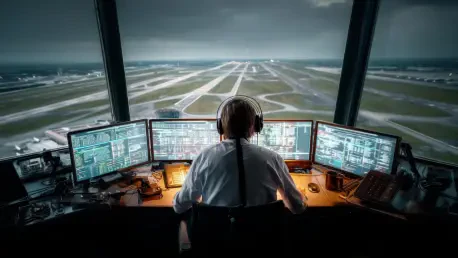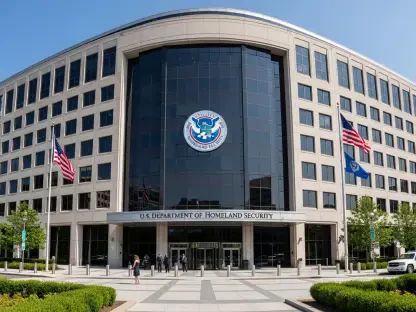In a startling development that has sent ripples through the aviation industry, the Federal Aviation Administration has mandated a 10 percent reduction in air traffic at the nation’s 40 largest airports, citing critical safety concerns and a severe shortage of air traffic controllers due to an ongoing government shutdown. This drastic measure comes as a direct consequence of thousands of essential federal workers being unpaid for weeks, placing unprecedented strain on the air travel system. The decision has already resulted in hundreds of flight cancellations, with major hubs like Atlanta’s Hartsfield-Jackson and New York’s John F. Kennedy bearing the brunt of the disruptions. As travelers grapple with delays and uncertainty, the intersection of public safety and political gridlock has taken center stage, raising urgent questions about the sustainability of critical infrastructure under such conditions. This unfolding crisis highlights the broader implications of budgetary disputes on everyday life and safety.
Safety Measures in a Strained System
The FAA’s decision to scale back air traffic by 10 percent is framed as a proactive step to safeguard the integrity of the aviation network during a period of intense pressure. With over 14,000 air traffic controllers classified as essential personnel, many have been working without pay for an extended duration due to the government shutdown. This has led to increased absenteeism and fatigue, directly impacting the ability to manage the usual volume of flights. According to recent data from FlightAware, cancellations have spiked dramatically, with over 790 flights grounded on a single Friday, a figure four times higher than the previous day. The phased reduction, which began at 4 percent and will reach the full 10 percent by mid-November, primarily affects domestic routes, while international flights remain at the discretion of airlines. This strategic approach aims to mitigate risks in an overtaxed system, ensuring that safety remains the top priority amidst growing operational challenges.
Beyond the immediate cancellations, the FAA’s actions underscore a deeper concern for maintaining rigorous safety standards in the face of dwindling resources. Major airports such as Dallas-Fort Worth, Denver, and Chicago O’Hare are experiencing significant disruptions, with nearly 500 additional cancellations reported for the following day after the initial surge. FAA Administrator Bryan Bedford has publicly stated a readiness to implement further cuts if the situation deteriorates, reflecting the uncertainty surrounding the resolution of the shutdown. U.S. Transportation Secretary Sean Duffy has emphasized that these measures are not politically motivated but are instead grounded in data-driven risk assessments. The focus on safety over convenience, while necessary, has left travelers and airlines scrambling to adjust, particularly as the busiest travel period at the end of November looms on the horizon, potentially exacerbating the impact of these reductions on public mobility.
Political Gridlock and Its Ripple Effects
The root of this aviation crisis lies in a prolonged government shutdown, now stretching over five weeks, driven by a congressional impasse over funding legislation, particularly concerning healthcare spending. This standoff between Republicans and Democrats has left approximately 730,000 federal employees unpaid, including the air traffic controllers critical to safe flight operations, while an additional 670,000 workers have been furloughed. The resulting strain on essential services like air travel reveals a troubling trend of political disputes directly harming national infrastructure. As delays mount—evidenced by 2,740 reported over a recent weekend—the public faces growing frustration, with no immediate resolution in sight. The timing of this crisis, coinciding with preparations for peak holiday travel, adds further pressure on lawmakers, particularly Senate Democrats who are currently blocking a spending bill, to find a compromise before the situation worsens.
The broader implications of this shutdown extend far beyond airport terminals, serving as a stark reminder of how interconnected federal services are to daily life. The aviation sector, a backbone of economic activity and personal connectivity, is just one of many areas feeling the pinch of budgetary deadlock. While the FAA remains focused on managing the immediate fallout through traffic reductions, the lack of a political breakthrough continues to jeopardize the stability of the system. Affected airports, which handle millions of passengers annually, are bracing for a ripple effect that could disrupt not only travel plans but also commerce and tourism during a critical season. The consensus among industry observers is clear: without swift action to resolve the shutdown, the current measures may only be the beginning of more severe interventions, potentially leading to even greater cuts in air traffic and further economic consequences.
Navigating Future Uncertainties
Reflecting on the events that transpired, the FAA’s decisive move to cut air traffic by 10 percent stood as a necessary response to an understaffed and overstressed control system, deeply tied to the unresolved government shutdown. This action, while prioritizing safety, disrupted hundreds of daily flights across major U.S. hubs, leaving travelers and airlines to navigate a landscape of cancellations and delays. Looking ahead, stakeholders must consider bolstering contingency plans, such as cross-training additional personnel or leveraging technology to alleviate controller workloads. Lawmakers face mounting urgency to resolve the budgetary stalemate, ensuring that essential workers receive compensation to prevent further erosion of critical services. As the peak travel season approaches, the aviation industry prepares for potential escalations, advocating for long-term solutions to shield infrastructure from political fallout, setting a precedent for resilience in future crises.









